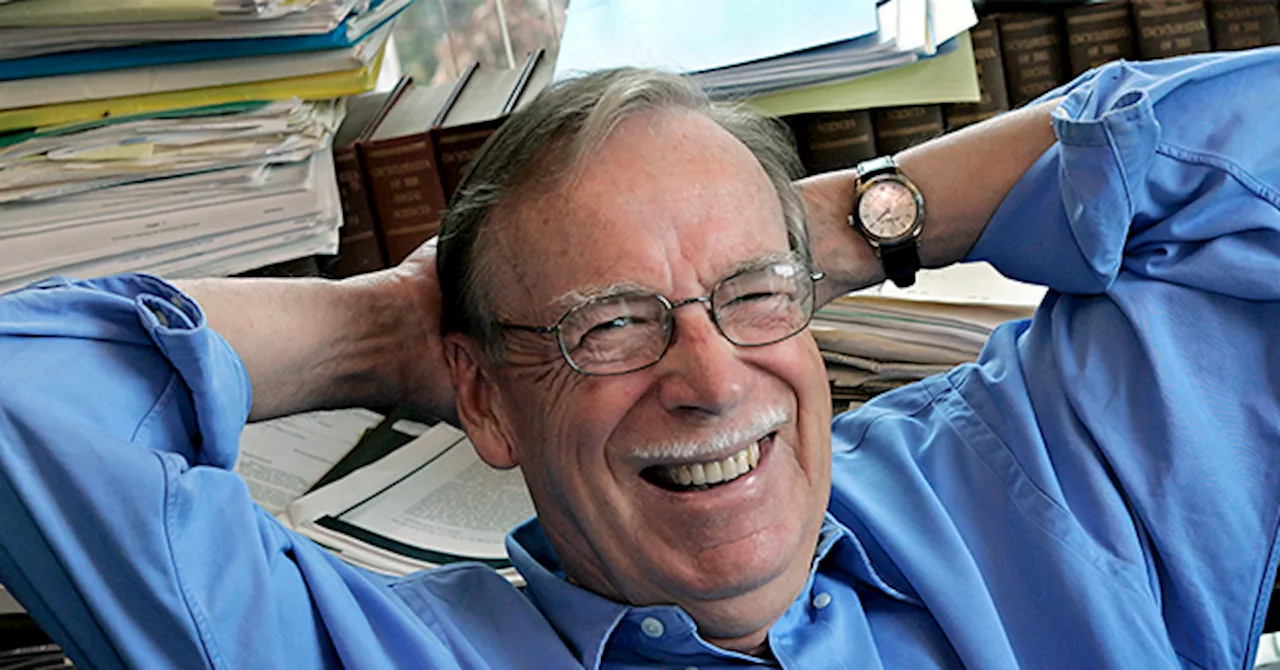Richard Easterlin, renowned for his research on the relationship between income and happiness, passed away at 98. His most impactful work explored the connection between economic prosperity and birth rates, arguing that strong job markets are essential for population growth.
Richard Easterlin , the economist known for his provocative argument that rising income levels don't necessarily lead to greater happiness, died at his home in Pasadena, California, on December 16. He was 98. The University of Southern California, where he was an emeritus professor, confirmed his death. Easterlin's lesser-known but perhaps more consequential work tackled a far weightier question: why societies boom and bust in matters of birth.
Easterlin’s baby boom hypothesis wasn’t a polite academic theory; it was a bold assertion that in an age obsessed with GDP and growth-at-any-cost economics, Easterlin had the audacity to challenge conventional wisdom: prosperity isn’t about numbers—it’s about real jobs and real lives. If you want more babies, you need more jobs. His theory hinges on a simple but profound insight: give young men decent jobs, and they’ll marry early and have kids. Fail to do so, and they won’t. Men without jobs or prospects do not make for attractive potential husbands and may choose to delay marriage until they can offer a better version of themselves. In other words, it wasn’t some nebulous sociological trend or cultural zeitgeist that drove the mid-century baby boom. It took more than just soldiers and sailors and airmen returning from the war. Consider postwar America: returning soldiers walked into an economy flush with high-paying industrial jobs, union strength, and upward mobility. Easterlin pointed out that this economic golden age set off the demographic explosion we now call the baby boom. By the late 1960s, however, the tide turned. Economic growth slowed, inflation reared its ugly head, and jobs for young men dried up. The fertility rate plummeted, and with it, the dream of large families. Easterlin didn’t mince words: Prior to the baby boom, many social scientists and public intellectuals assumed that the fall in birth rates was irreversible. The conventional wisdom of the time was that modern societies, once on a path of falling birth rates, would never return to high fertility
OBITUARY Richard Easterlin Baby Boom Economics Birth Rates Happiness
United States Latest News, United States Headlines
Similar News:You can also read news stories similar to this one that we have collected from other news sources.
 'Dr. Doom' economist has a new ETF to hedge against inflation and climate changeNouriel Roubini is a portfolio manager of the new Atlas America Fund, which holds real estate, commodities and short-term Treasurys.
'Dr. Doom' economist has a new ETF to hedge against inflation and climate changeNouriel Roubini is a portfolio manager of the new Atlas America Fund, which holds real estate, commodities and short-term Treasurys.
Read more »
 Bitcoin (BTC) in 'Supercycle': Economist Alex KrugerBitcoin in different kind of cycle
Bitcoin (BTC) in 'Supercycle': Economist Alex KrugerBitcoin in different kind of cycle
Read more »
 If Trump adds tariffs, ‘either way, there is a cost to consumers,' economist saysPresident-elect Donald Trump’s tariff plan is expected to raise costs, especially for low and middle earners, experts said. But the scope of tariffs is…
If Trump adds tariffs, ‘either way, there is a cost to consumers,' economist saysPresident-elect Donald Trump’s tariff plan is expected to raise costs, especially for low and middle earners, experts said. But the scope of tariffs is…
Read more »
 Economy faces ‘some potential storms' in 2025, Moody's chief economist saysThe economy is doing “exceptionally well,” said Moody’s Analytics chief economist Mark Zandi. But he sees headwinds under the new…
Economy faces ‘some potential storms' in 2025, Moody's chief economist saysThe economy is doing “exceptionally well,” said Moody’s Analytics chief economist Mark Zandi. But he sees headwinds under the new…
Read more »
 Bank of America Economist on the Economy Under TrumpAditya Bhave, a senior economist at Bank of America, discusses the state of the economy as the Trump administration takes office. He highlights the positive economic momentum, unexpected growth, and declining inflation. Bhave identifies fiscal and trade policies as key uncertainties in 2025, acknowledging the potential impact of immigration policy as well.
Bank of America Economist on the Economy Under TrumpAditya Bhave, a senior economist at Bank of America, discusses the state of the economy as the Trump administration takes office. He highlights the positive economic momentum, unexpected growth, and declining inflation. Bhave identifies fiscal and trade policies as key uncertainties in 2025, acknowledging the potential impact of immigration policy as well.
Read more »
 Economist Blames Economy for Democrats' LossDemocratic strategist James Carville attributes the party's defeat in the presidential election to a failure to connect with voters on economic issues. He argues that Democrats must prioritize the economic narrative and effectively communicate their policies to win back public trust.
Economist Blames Economy for Democrats' LossDemocratic strategist James Carville attributes the party's defeat in the presidential election to a failure to connect with voters on economic issues. He argues that Democrats must prioritize the economic narrative and effectively communicate their policies to win back public trust.
Read more »
